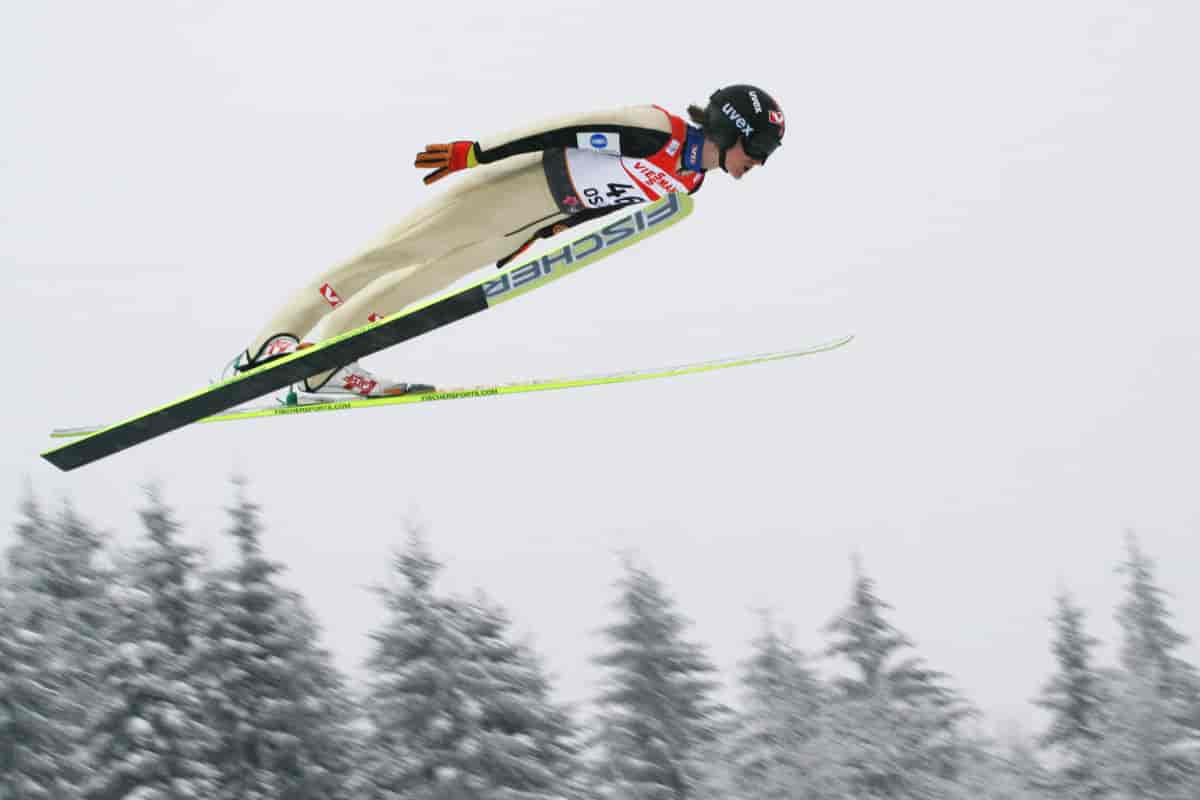
Skiing is a winter sport in which competitions take place on skis, including Scandinavian and Alpine disciplines.
Related and partly derived sports are trackless inline skiing, grass skiing, roller slalom, and skateboarding (see skateboarding), which are ski-related forms of training with independent organized competition. In everyday speech, skiing also includes unorganized, amateur skiing.
In Denmark, the sport is organized by the Danish Ski Association (founded in 1938), which in 2009 had approx. 11,326 members in 64 clubs.
Nordic disciplines
Cross-country freestyle. Depending on the slope of the track, different riding techniques are used. Attachment lubrication is not used, only sliding lubrication. A trace without a trace.
In ski jumping, it is important to reach a large floating surface in order to achieve as much distance as possible. Ski jumping (V-style), arms slightly away from the body, and specially designed jumping clothing contribute to this. Low body weight is an advantage. Skis and equipment in competitions are strictly regulated. Ski sports style and equipment, read more about all this on this resource: www.skiavisen.dk/skisport-stil-og-udstyr/
Ski jumping is judged on a combination of length and style. Ideas about what a stylish jump is have changed over time. In the 1960s, Norwegian Björn Wirkola was considered one of the best vaulters of the style.
Scandinavian disciplines traditionally include cross-country skiing, ski jumping and Nordic combined, but functionally also biathlon and ski orienteering, i.e. sports that have been developed in the Scandinavian countries.
Cross-country skiing
Classical diagonal walking in cross-country skiing. You alternately press your right and left legs to the ground, while pushing off with the opposite stick.
Cross-country skiing is practiced at distances from less than 1 km (sprints and children's competitions) to more than 100 km (training races, see Vasaloppet) over a variety of snowy terrain on prepared tracks on light, narrow cross-country skis. Running can be classic or free style. On steep descents, alpine descent techniques and pedal swings are used.
The difference between the two styles lies in the choice of movement technique: in classic skiing, skiing is prohibited. Stagnation (on easy descents), stagnation with takeoff (on flat ground), diagonal stride (on easy climbs), and herringbone technique (on steep climbs) are commonly used. The last three steps require the use of attachment lubrication, which, however, has little braking effect.
In freestyle, all techniques are allowed, which in practice means that the fastest, almost always skating, does not require attachment lubrication, but only fast slip lubrication is selected. On easy descents skates are usually used in a speed position without the use of poles, on flat single stroke skates, on easy climbs conventional two stroke skates and on steep climbs a special two stroke rowing technique.
Alpine disciplines
Alpine disciplines include traditional downhill, super-G, giant slalom, specialty slalom (see slalom) and mountain combination, as well as freestyle, telemark slalom (see telemark swing), snowboarding (see snowboarding) and speed skiing.
All of these sports are recognized skiing competitions and are played solely as high-speed time trials on a fixed track with heavy equipment and thus usually rely on lift systems. In addition to telemark slalom, the disciplines were developed in the Alps.
Downhill and slalom
Downhill, Super G, Giant Slalom, Specialty Slalom, Telemark Slalom and Snowboard Slalom are timed events that require efficient rounding and sharp turns on a predetermined curved course marked by gates with flexible inner posts. Each discipline is played on tracks with fixed limits on length, height meters, slope, number of gates and the distance between them.
The ideal race is an adapted compromise between gravity, full snow contact, air and slip resistance, ski turning characteristics and, last but not least, runner technique, fitness and leg muscle strength.
Optimum speed is achieved through the technical processing of ski soles, incl. paraffin lubrication adapted to snow type and temperature, airspeed target position and active cornering.
You may also be interested in: The Impact of Social Casino Gaming on Youth and Online Gambling